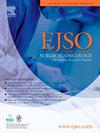Defining the tumor location in rectal cancer – Practice variations and impact on treatment decision making
IF 3.5
2区 医学
Q2 ONCOLOGY
引用次数: 0
Abstract
Objective
To summarize differences in current guideline recommendations for rectal tumor localization and generate an overview of published MRI measurement methods and their correlation with endoscopy.
Summaryof background data
Rectal tumor location is a well-known factor that impacts treatment planning, but there is currently no consensus on the optimal method to define it.
Methods
A literature search was conducted to retrieve clinical and radiological rectal cancer guidelines as well as original research studies on MRI-based measurements. Guidelines were assessed for definitions, landmarks, modalities and measurement methods to define tumor location, and how these impact treatment planning. Research studies were evaluated to compare MRI-methods and their correlation with endoscopy.
Results
18 clinical and 6 radiological guidelines were retrieved. In 83 % of clinical guidelines tumor location (low/middle/high) is included in the treatment algorithm as a factor impacting surgical and/or neoadjuvant treatment. Measurement cut-offs and landmarks vary significantly with the anal verge being the most commonly used landmark (28 %). Thirty-nine percent of clinical guidelines offer no definitions to define rectal tumor location. The majority of research studies (67 %) reported good-excellent agreement between MRI and endoscopy, though measurement differences of up to 2.5 cm were reported.
Conclusion
There is substantial variation in definitions and landmarks recommended in current guidelines to measure and classify rectal tumor location. This may affect treatment planning as well as trial inclusions, highlighting the need for standardized methods that better align between clinical and radiological guidelines.
求助全文
约1分钟内获得全文
求助全文
来源期刊

Ejso
医学-外科
CiteScore
6.40
自引率
2.60%
发文量
1148
审稿时长
41 days
期刊介绍:
JSO - European Journal of Surgical Oncology ("the Journal of Cancer Surgery") is the Official Journal of the European Society of Surgical Oncology and BASO ~ the Association for Cancer Surgery.
The EJSO aims to advance surgical oncology research and practice through the publication of original research articles, review articles, editorials, debates and correspondence.
 求助内容:
求助内容: 应助结果提醒方式:
应助结果提醒方式:


